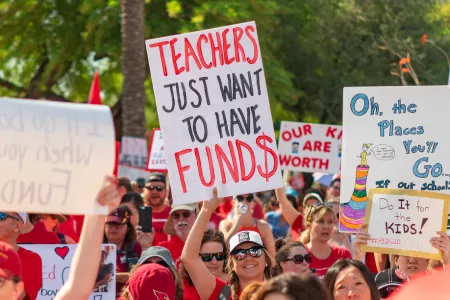Educators face several different scenarios in which they may need to take leave related to COVID-19—whether they are ill, are asymptomatic but isolating because of a positive test, or are caretaking for others.
One of the primary mitigation measures schools should be employing is for people who are sick to stay home. The Centers for Disease Control and Prevention (CDC) recommends that people who have symptoms associated with COVID-19 stay home and schools “should allow flexible, non-punitive, and supportive paid sick leave policies and practices” that “support workers caring for a sick family member and encourage sick workers to stay home without fear of retaliation, loss of pay, loss of employment, or other negative impacts.” Schools should also “provide excused absences for students who are sick, avoid policies that incentivize coming to school sick, and support children who are learning at home if they are sick.”
For schools and campuses to maintain a safe environment for the entire community, it is vital that educators be able to take the time off from work as needed.
Federal funding to provide for additional paid sick leave for educators is available through the Elementary and Secondary School Emergency Relief Act (ESSER) funds, part of the Coronavirus Response and Relief Supplemental Appropriations (CARES) Act (2020) and the American Rescue Plan (ARP) (2021).
The following provides basic information about collective resources and individual rights that may help educators secure needed leave.
More Resources
Collective Bargaining: Educator Voice in the COVID-19 Environment
Amplifying Educator Expertise Through Collective Bargaining and/or Collaboration to Address COVID-19 Issues
The ESSER Funds: Bargaining and Advocacy Guidance for Safe and Equitable Schools
American Rescue Plan Funding Checklist
Educator Rights to Accommodations
Always check with your state/local association for assistance in enforcing your rights and about additional rights you may have under state laws, collective bargaining agreements or memoranda of understanding with the employer, or policies. Laws and potential legal remedies vary from state to state, and depend on individual facts and circumstances. For questions about individual legal claims, you should always consult with your local or state legal counsel or another attorney licensed to practice law in your state.
For additional bargaining or advocacy questions or resources including contract language, contact NEA’s Department of Collective Bargaining and Member Advocacy at [email protected].
Are you an affiliate?





